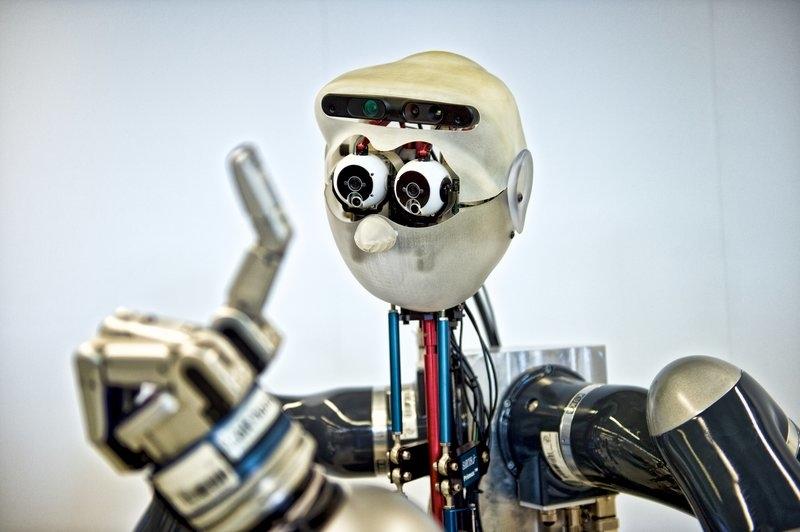All Amazon Wants Are Robots

Image Courtesy: Max-Planck-Gesellschaft
Amazon, the world’s largest online retailer, is on its way to becoming the world’s first trillion-dollar company, while its founder and CEO Jeff Bezos is already the richest man in the world.
But how does a company — even a technology company with its connotations of the cutting edge — get so big? By extracting the maximum possible labour out of its workers, and then some more, of course.
In August 2015, the New York Times had published an investigative report on the harsh and unforgiving management style at Amazon’s corporate headquarters in Seattle, US, which relentlessly pushed workers . Even workers “suffering from cancer, miscarriages and other personal crises said they had been evaluated unfairly or edged out rather than given time to recover.” And remember, these are white-collar workers.
But even these working conditions sound like a cakewalk compared to what the workers at Amazon’s warehouses have to endure.
Recently, Amazon patented designs for ultrasonic wristbands that would be able to track the workers’ hand movements in warehouses, and would vibrate if the worker’s hands began moving in the wrong direction, nudging them towards the right direction.
Imagine working with an electronic leash literally tied to your hands. This has been posed as a “labour-saving measure to keep track of products throughout the warehouse”. But what it would obviously amount to is constant surveillance on workers to ensure they are constantly on the job — picking, packaging, sorting in order to fulfil orders — and that their hands do not waste any time at all.
In fact, companies are even experimenting with technology that monitors employees’ facial expressions. Meanwhile, what is called ‘people analytics’ — predictive statistical tools based on big data — is frequently being employed by companies to monitor the behaviour patterns of employees.
The single overarching aim is to maximise profits — you don’t pave the way towards a trillion-dollar market valuation without that. And profits can only be maximised by cutting down costs and increasing productivity.
Labour is the one thing companies have complete control over. So you push down the cost of labour, not just through underpaying your workers — as Amazon warehouse workers are — but by ensuring that the workers produce more and more in the same given amount of time and with the same wages.
Stories and investigative reports abound about the condition of the low-wage, blue-collar workers inside the Amazon warehouses, where the workers are forced to behave like human robots, while working alongside robots — even as the company seems to pay no mind to the human cost, driven only by the goal of maximising productivity.
In 2011, the company attracted criticism after a local newspaper report investigated the condition of workers in a warehouse in Pennsylvania, US. The workers would regularly faint after labouring in more than 100-degree heat. What’s more, there were ambulances waiting outside to take the fallen workers away. Amazon installed air-conditioning in the warehouse after it drew flak following the publication of the report.
In fact, there are reports after reports after reports of workers facing gruelling and inhumane conditions. Workers are overworked with impossible targets to meet that are set by computers — a worker described having a maximum of 15 seconds to put away an item in order to “get through 250 in an hour, toilet breaks and lunch breaks that are stringently timed, exhausted workers fall asleep on their feet, if they don’t faint, that is.
In fact, Amazon has been faced class-action suits by workers stating they were denied breaks, overtime pay, and the commensurate level of wages workers have even sued the company over security checkpoint waits wasting workers’ time without paying them for it.
The UK’s GMB trade union in 2015 had stated that Amazon workers were under immense pressure to perform as “above-average Amazon robot”, which was making them physically and mentally ill.
Last year, workers at six Amazon warehouses in Germany, the company’s second-largest market after the US, and at the main distribution hub in Italy went on strike, protesting against the working conditions that “endangers the health of its employees” and demanding overtime pay.
The ultimate aim, of course, is to replace the human workers with robots altogether — indeed, last year Amazon added 75,000 more robots to its warehouses. Until then, the technology giant and other corporates will keep experimenting newer and newer technology to push workers as close to performing as close to robots as they can.
Get the latest reports & analysis with people's perspective on Protests, movements & deep analytical videos, discussions of the current affairs in your Telegram app. Subscribe to NewsClick's Telegram channel & get Real-Time updates on stories, as they get published on our website.
























